
Significant Thistle Rows
along the way
The mowing of the meadows, which is necessary for keeping grassland open, means that the supply of nectar plants for insects abruptly disappears from the respective area. On the project areas at the Hägebach creek north of Samswegen it has been shown that the insect mass on flowering thistles is particularly high. The dry-resistant shrubs give plenty of nectar even in long-lasting drought, even if other flowering plants have already dried up. For this reason, some thistle strips on the roadsides of the Technology Park are temporarily excluded from the mowing. Thus, during the transitional period until the mowing areas bloom again, sufficient nectar sources are available for numerous butterflies, bumblebees, bees, beetles, bugs and flies. Further groups of species in the technology park indirectly benefit from the activities for the protection of the insects. For bats, birds, reptiles and amphibians, important food sources are created by protecting the insects.
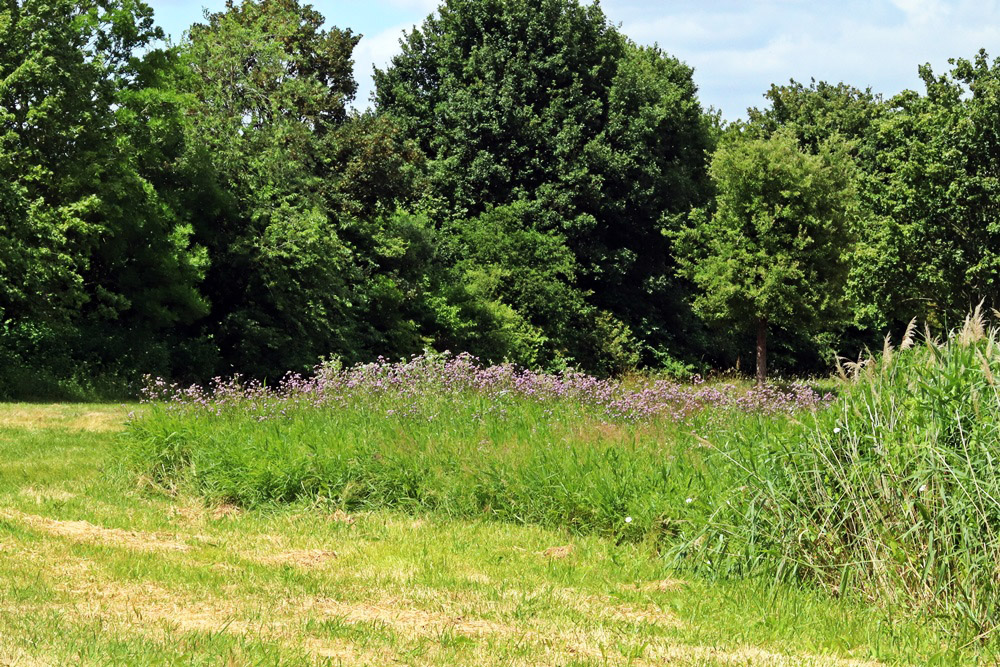
After the mowing, strips of thistles and other tall shrubs are important retreats and sources of nectar for a multitude of insects. The attractive blossoming enriches the appearance of the park.
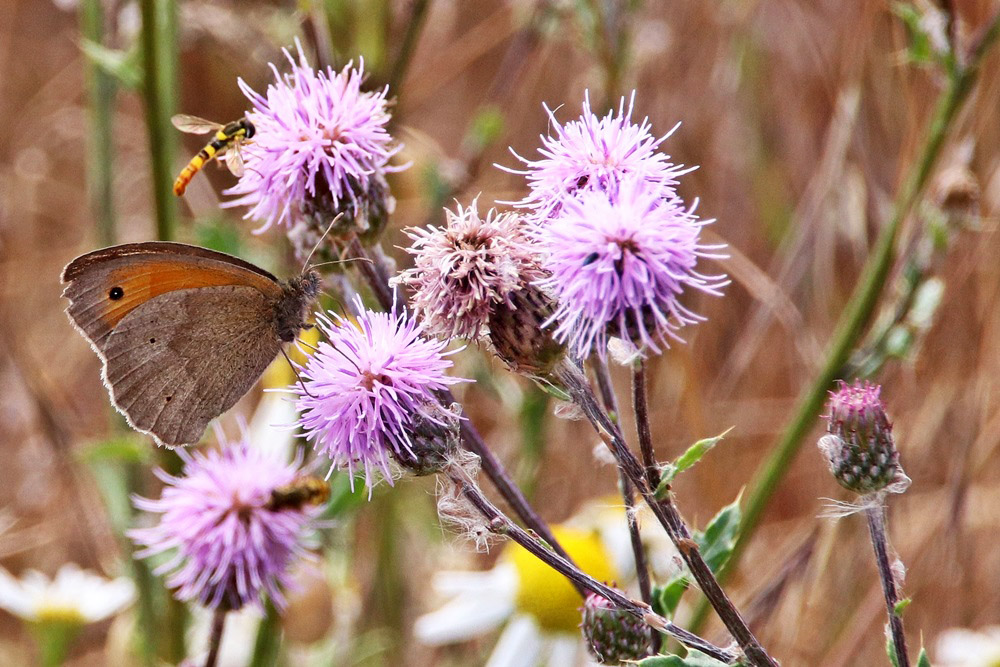
The Meadow Brown Butterfly (Maniola jurtina) prefers to visit purple flowers, so it can often be observed on thistles. The females visit preferably mown meadows for laying eggs. There they attach their eggs close to the ground to dried grasses or they drop them directly onto the ground. The caterpillars feed on various sweet grasses. Therefore, the species is more abundant on species-rich, extensively managed grasslands than butterfly species bound to certain forage plants for their caterpillars.
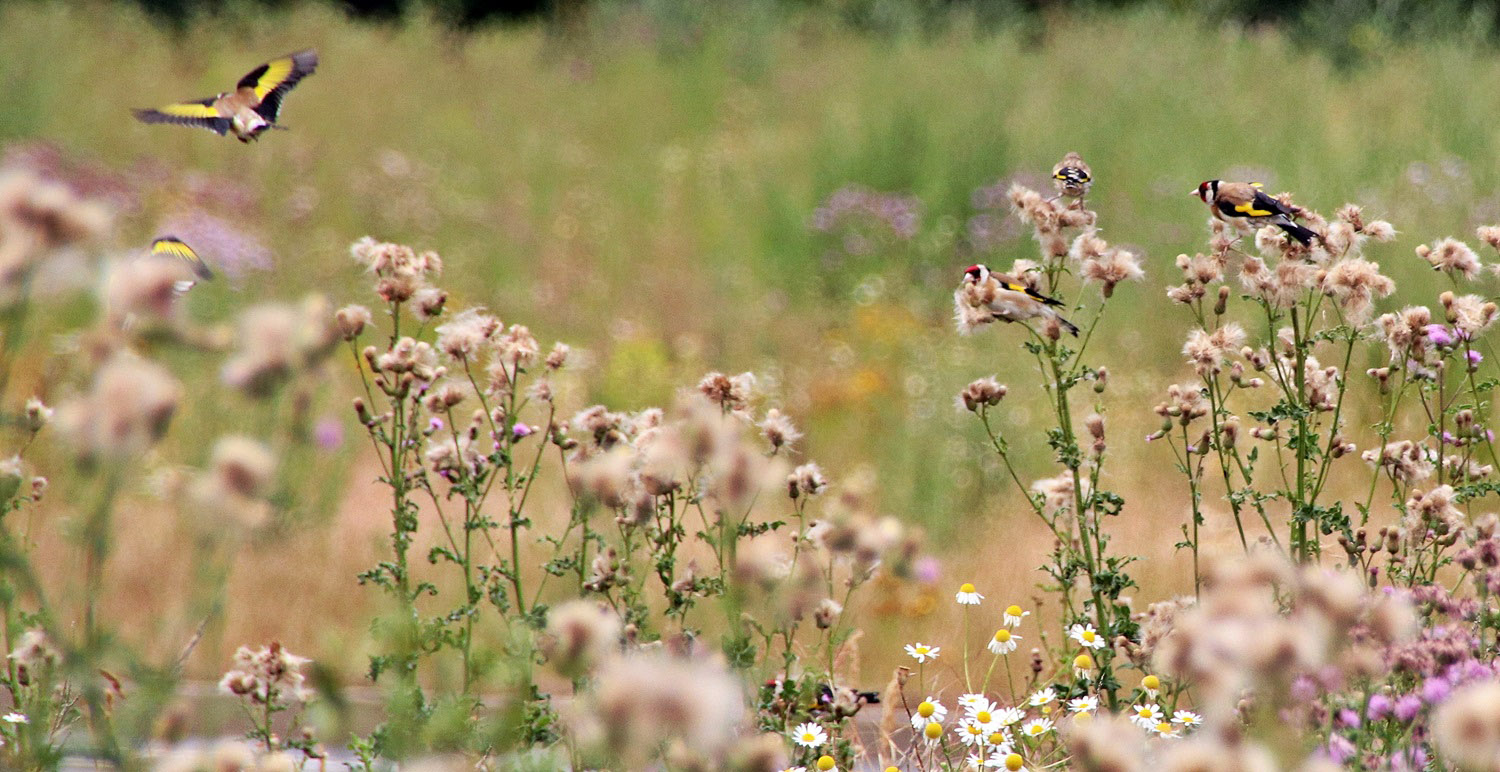 The colorful Gold Finches (Carduelis carduelis), regularly travel in small swarms through the Technology Park, where they feed on the seeds of various plants of the aster family. Thistle rows thus fulfill important ecological functions even in the wilted state. For various species of birds they are important food stocks in winter.
The colorful Gold Finches (Carduelis carduelis), regularly travel in small swarms through the Technology Park, where they feed on the seeds of various plants of the aster family. Thistle rows thus fulfill important ecological functions even in the wilted state. For various species of birds they are important food stocks in winter.
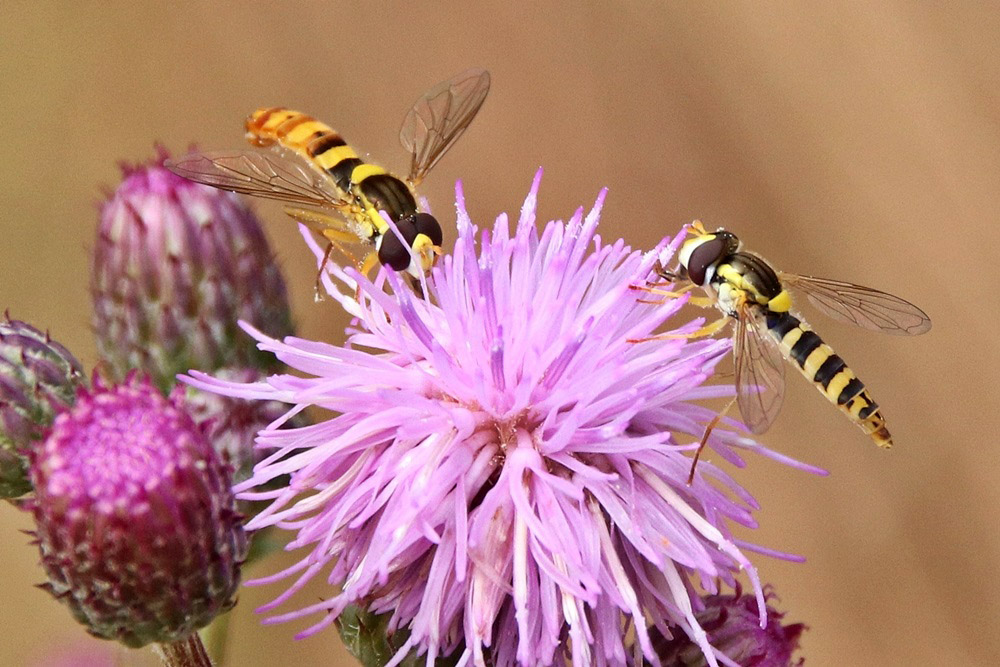
On the flower heads of the Corn Thistle (Cirsium arvense) you can see many different species of flies. Particularly common in the technology park is the Long Hoverfly (Sphaerophoria scripta) whose larvae feed on aphids.
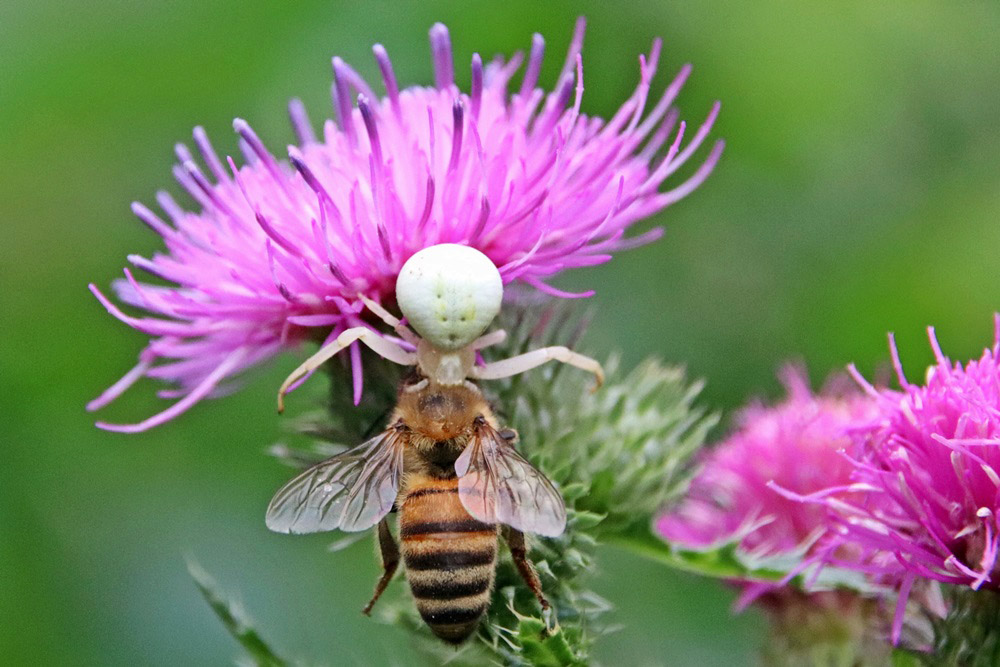
The Goldenrod Crab Spider (Misumenta vatia) uses thistle flowers for prey. For this purpose, she lurks motionless on insects, such as honey bees or butterflies, which are often many times larger than herself.
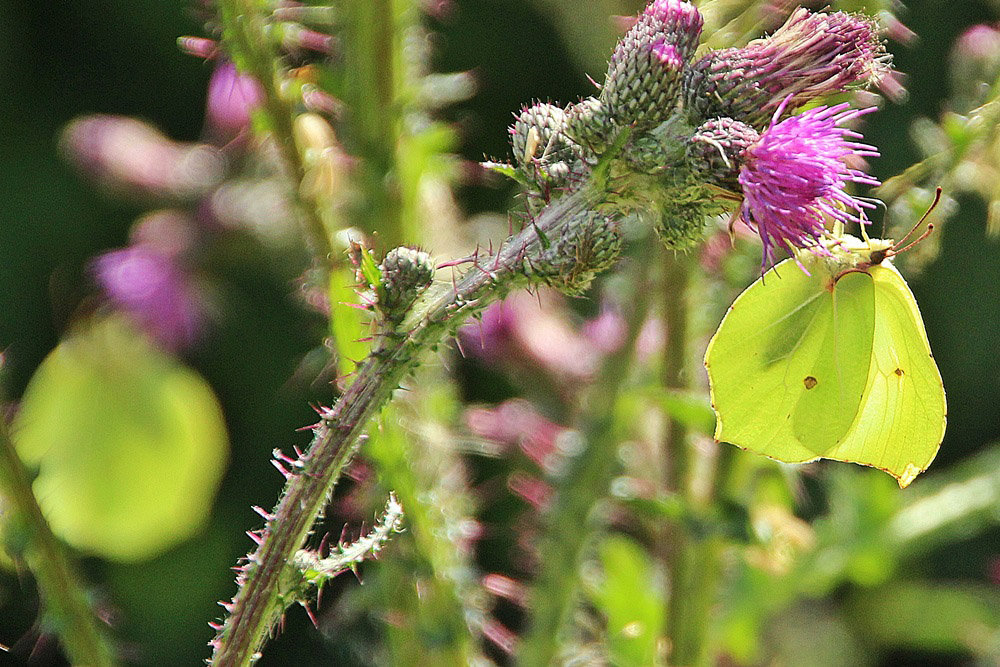
Common Brimstone Butterflys (Gonepteryx rhamni) often visit European Swamp Thistles (Cirsium palustre) in the border areas of the waters. The species is one of the butterflies whose caterpillars feed exclusively on woody plants (alder buckthorn and common buckthorn).
Text and Photos: Susen Schiedewitz